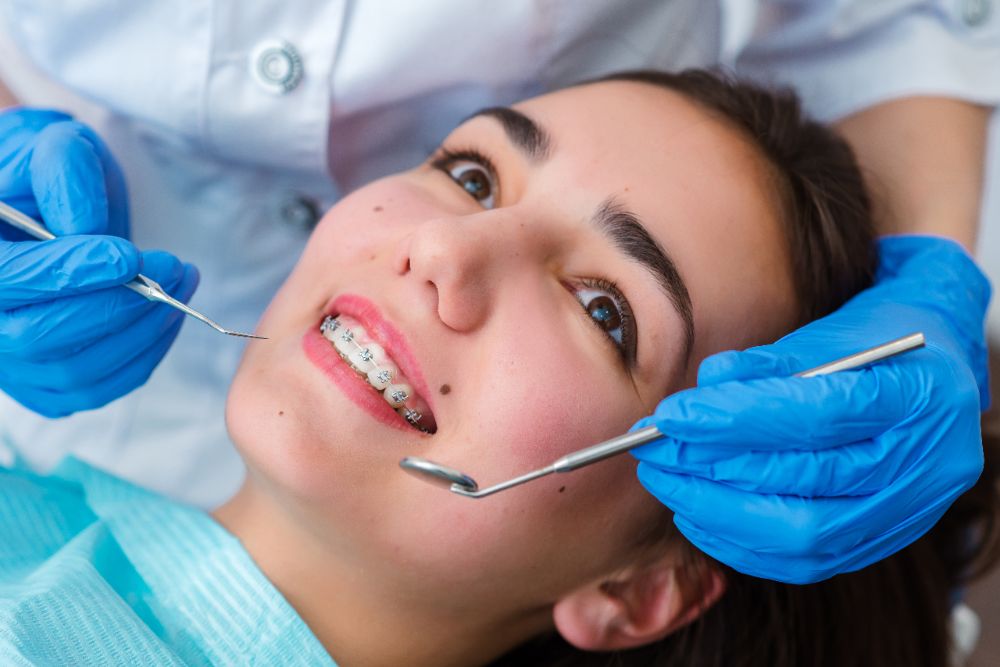How Cumming Orthodontics Can Change Your Smile with Invisalign and Braces
Comprehensive Overview to Orthodontics Treatments for Dealing With Dental Misalignments
Recognizing the ins and outs of each treatment, including their systems, benefits, and possible downsides, is essential in making informed choices about one's orthodontic treatment. As we navigate with the thorough guide to orthodontic procedures for correcting dental misalignments, the detailed information of each technique will certainly unravel, losing light on the course towards a harmonious and functional dental positioning.
Orthodontic Procedures Introduction

Along with traditional dental braces and clear aligners, orthodontists may likewise advise other treatments like headwear, palatal expanders, or retainers to address specific alignment concerns (cumming orthodontics). These procedures are customized to every client's unique requirements and might entail a mix of treatments to accomplish the desired results. Normal adjustments and tracking are important parts of orthodontic therapy to guarantee progression gets on track and to make any type of needed modifications along the road. By going through orthodontic procedures, patients can not just attain a straighter grin yet additionally boost their overall oral health and wellness and feature.
Traditional Braces: Just How They Function
When thinking about orthodontic treatments for oral imbalances, typical dental braces attract attention as a tried and true method for correcting teeth positioning. Typical braces contain braces, cords, and bands that work together to use continual stress on the teeth, progressively moving them right into the desired positioning. The braces are connected to the teeth utilizing a special adhesive, and the cables are threaded through the braces. By readjusting the stress of the wires, orthodontists can manage the instructions and force used to each tooth, leading them right into appropriate alignment in time.
One trick facet of how typical dental braces job is the process of bone renovation. As pressure is used to the teeth with the dental braces, the bone bordering the teeth is improved to sustain the new tooth placements. This improvement is vital for the lasting stability of the remedied placement. Patients will certainly need normal modifications at the orthodontist's office to make sure the braces remain to apply the appropriate pressure for efficient teeth movement.
Unnoticeable Aligners: Advantages And Disadvantages
Unseen aligners use a very discreet and practical alternative to traditional braces for correcting oral misalignments. These clear, personalized trays are virtually undetectable when used, making them an attractive alternative for individuals looking for an extra visually pleasing orthodontic treatment. Among the primary benefits of unseen aligners is their removability, permitting simpler maintenance of oral hygiene contrasted to typical braces. Patients can remove the aligners before consuming or brushing their teeth, lowering the danger of food obtaining embeded the home appliance and simplifying the cleansing procedure.

Surgical Orthodontic Options
Surgical treatments in orthodontics existing viable choices for resolving complex dental imbalances that may not be effectively resolved via standard orthodontic treatments. While invisible aligners and typical braces can deal with many orthodontic problems, particular cases require surgical intervention to attain optimal outcomes. Surgical orthodontic choices are usually advised for extreme malocclusions, substantial jaw inconsistencies, and cases where the underlying bone framework needs modification to achieve appropriate placement.
One typical surgical orthodontic treatment is orthognathic surgery, which involves rearranging the jaws to fix functional problems such as problem speaking or chewing. This surgical procedure is typically performed in partnership with an orthodontist who helps straighten the teeth before and after the procedure. Surgical orthodontics may likewise include procedures to subject influenced teeth, get rid of excess gum cells, or improve the jawbone to develop an extra unified facial account.
Before taking into consideration surgical orthodontic choices, individuals go through a comprehensive assessment to establish the requirement and prospective advantages of such interventions. cumming orthodontist. While surgery may seem challenging, it can dramatically improve both the feature and appearances of the smile in situations where traditional orthodontic therapies fall short
Retainers and Post-Treatment Treatment

Post-treatment treatment entails following the orthodontist's guidelines diligently. This may include correct dental hygiene techniques, going to follow-up appointments, and putting on the retainers as recommended. Failing to adhere to post-treatment care instructions can cause link regression, where the teeth progressively move back towards their original settings. Regular retainer wear, excellent dental health, and routine dental exams are important for preserving the outcomes attained via orthodontic surgery and making sure the long-term check that security of the remedied oral placement.
Verdict
In verdict, orthodontic treatments supply various choices for dealing with oral imbalances. Traditional braces utilize metal braces and cables to change teeth into correct alignment. Invisible aligners supply an even more very discreet alternative yet may not appropriate for all cases. Surgical orthodontic options are available for more extreme imbalances. Retainers are generally made use of post-treatment to keep the new placement. Overall, orthodontic procedures can successfully boost oral health and visual look.
As we navigate through the thorough overview to orthodontic procedures for dealing with oral imbalances, the intricate details of each method will certainly unravel, losing light on the path toward a functional and unified oral positioning. - invisalign
One of the most usual orthodontic treatments is the usage of dental braces, which are composed of steel brackets and cables that apply mild pressure to progressively shift teeth right into the wanted position.When thinking about orthodontic treatments for dental imbalances, standard braces stand out as a reliable technique for correcting teeth placing. Additionally, unnoticeable aligners may not be appropriate for intricate orthodontic problems that call for even more considerable teeth movement, as they are generally advised for mild to modest instances. Retainers are custom-made orthodontic gadgets designed to hold teeth in their fixed positions after the conclusion of orthodontic treatment.